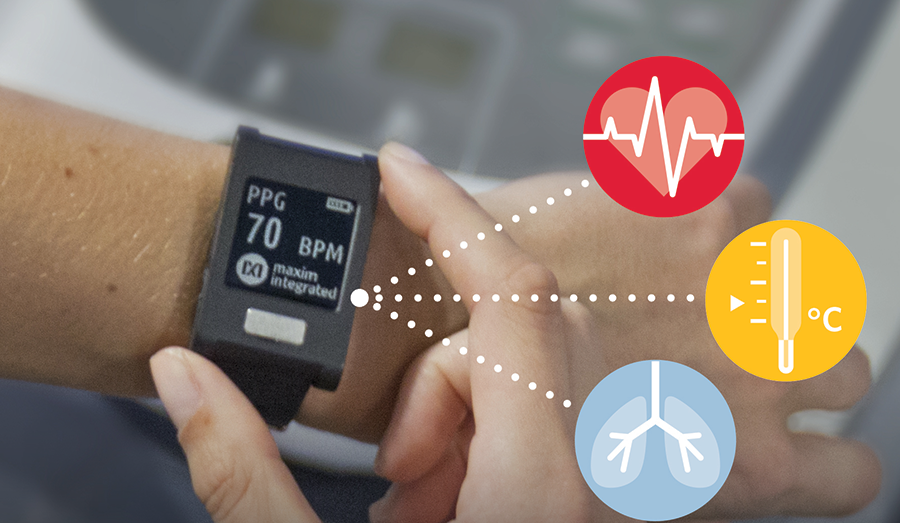Maxim Integrated Products, Inc. has created a wrist worn platform Health Sensor Platform 2.0 (HSP 2.0) for designers to develop unique and highly accurate wearable devices that continuously monitors various health parameters. Also known as MAXREFDES101, this next-gen rapid prototyping, evaluation and development platform has the ability to monitor electrocardiogram (ECG), heart rate and body temperature to a wrist-worn wearable, saving up to 6 months in development time.
Read more Livongo Announces First Blood Pressure Monitor with Cellular Connectivity in U.S.
As far as wearables go, a wrist-based device is convenient for users to wear daily. However, it has been a challenge to precisely obtain ECG data from the wrist since most alternatives require a wearable chest strap. Additionally, a thermometer needs to be placed at another location to get accurate body temperature.
The wrist-based platform, which is enclosed in a watch casing, enables HSP 2.0 to provide basic functionality out of the box, with body-monitoring measurements starting immediately. Data can be stored on the platform for immediate evaluation of the patient or streamed to a PC for analysis later. Unlike other wearables, the data collected by the HSP 2.0 can be owned by the user, increasing data privacy and allowing users to conduct their own data analysis. Also, because HSP 2.0 is an open platform, designers can evaluate their own algorithms on the board. In addition, the modular format is future proof to quickly accommodate new sensors.
HSP 2.0 includes the following products:
- MAX32630 DARWIN low-power microcontroller for wearables and internet of things (IoT) applications
- MAX32664 ultra-low-power biometric sensor hub with embedded heart-rate algorithm
- MAX20303 highly integrated and programmable power management solution designed for ultra-low-power wearable applications
- MAX30205 human body temperature sensor with ±0.1 degree Celsius accuracy
- MAX30001 ultra-low-power, single-channel integrated biopotential and bioimpedance analog front-end (AFE) solution for wearable applications
- MAX86141 ultra-low-power optical pulse oximeter and heart-rate sensor for wearables
Designers’ Benefits
- Quick Marketing Time. Fully working hardware and firmware with companion watch casing cuts design and validation time by up to six months
- High Accuracy. Only available solution to integrate clinical-grade ECG along with heart-rate and body-temperature measurements into a wrist-worn format
- Arm® Mbed™ Support. For efficient evaluation and rapid application prototyping, the Mbed environment provides a high level of abstraction to eliminate maintenance of software tools and provide an extensive library of open-source software













